Abstract
Kluyveromyces fragilis (CBS 397) is a nonhalophilic yeast which is capable of lactose utilization from whey permeate and high glycerol production under anaerobic growth conditions. However, the optimum yields of glycerol (11.6 mg/ml of whey permeate medium) obtained in this study occurred only in the presence of 1% Na2SO3 as a steering agent. The use of other concentrations of Na2SO3, as well as 5% NaCl and 1% ascorbic acid, had no or detrimental effects on cell growth, lactose utilization, and glycerol production. Glycerol yields were greater in cultures grown from a light inoculum of K. fragilis than in cultures in which a resuspended mass of cells was introduced into the medium. The results of this study suggest that this strain of K. fragilis may be useful commercially in the utilization of cheese whey lactose and the concomitant production of glycerol.
Full text
PDF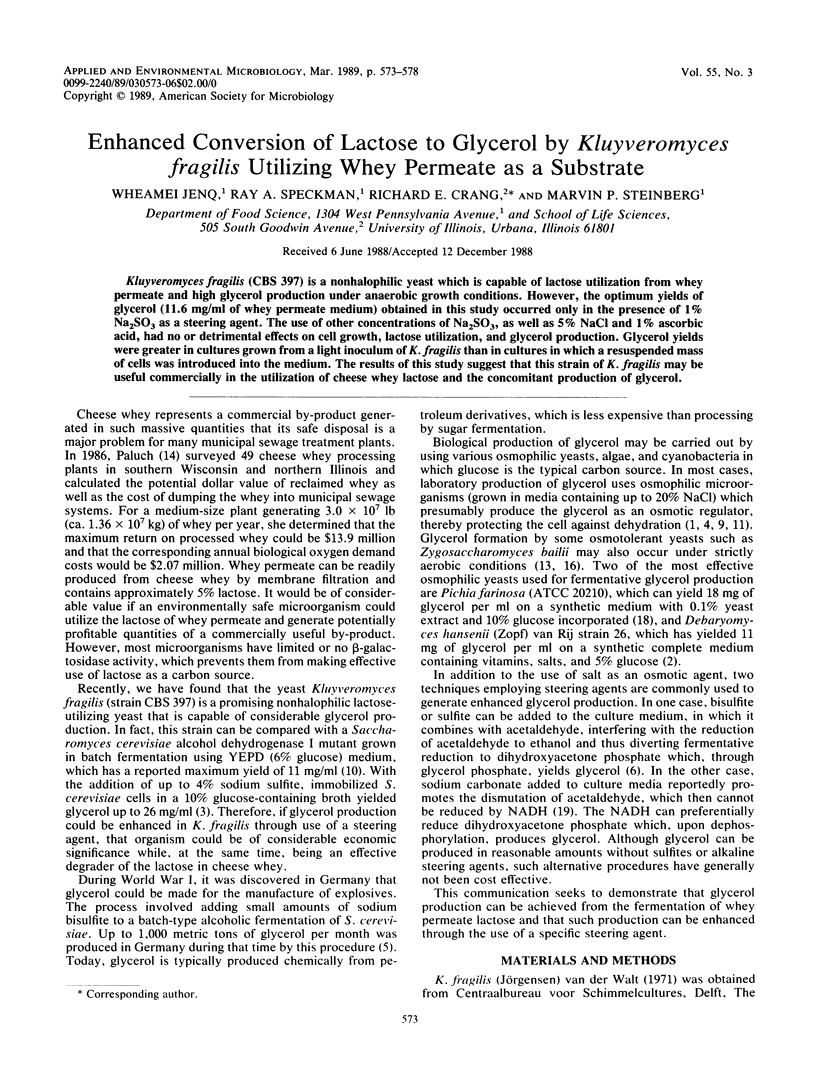
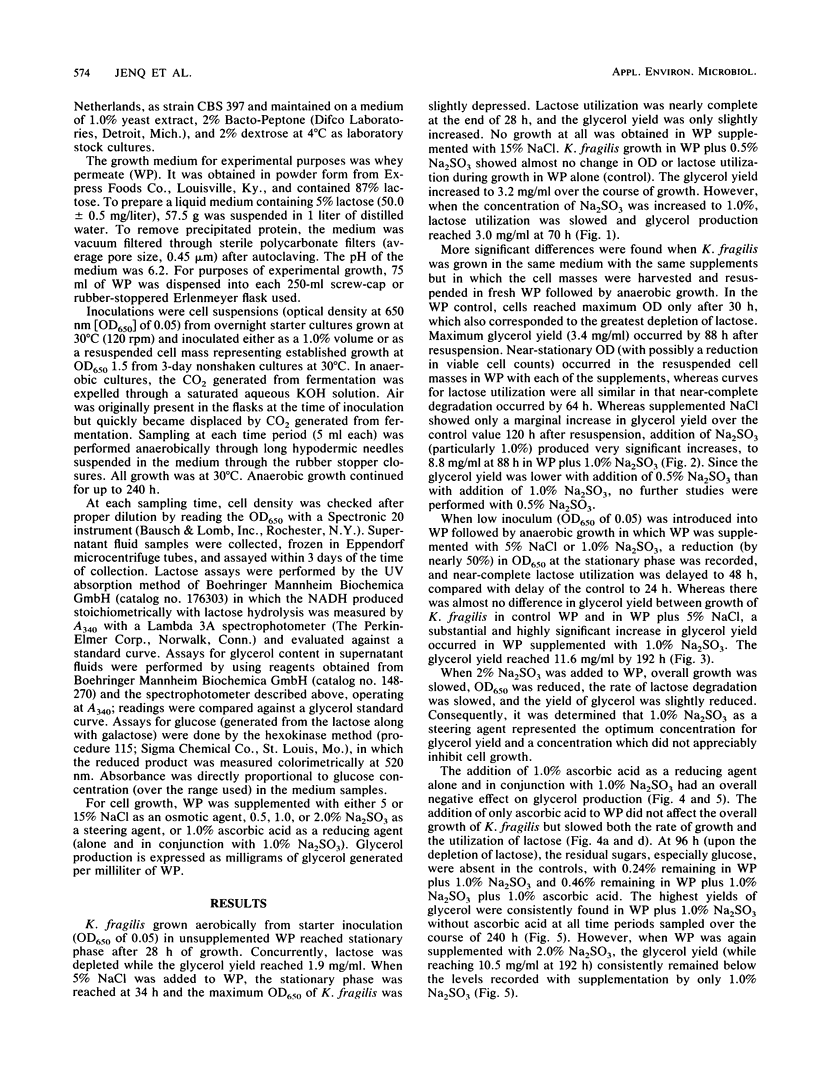
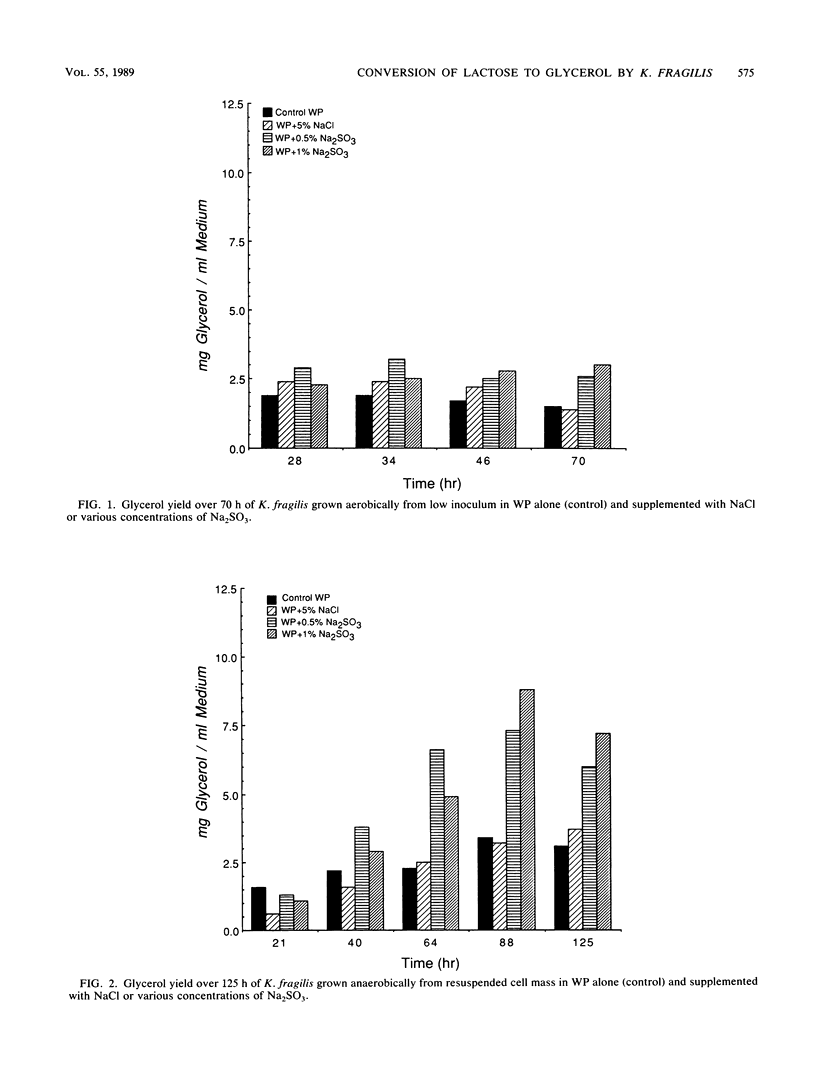
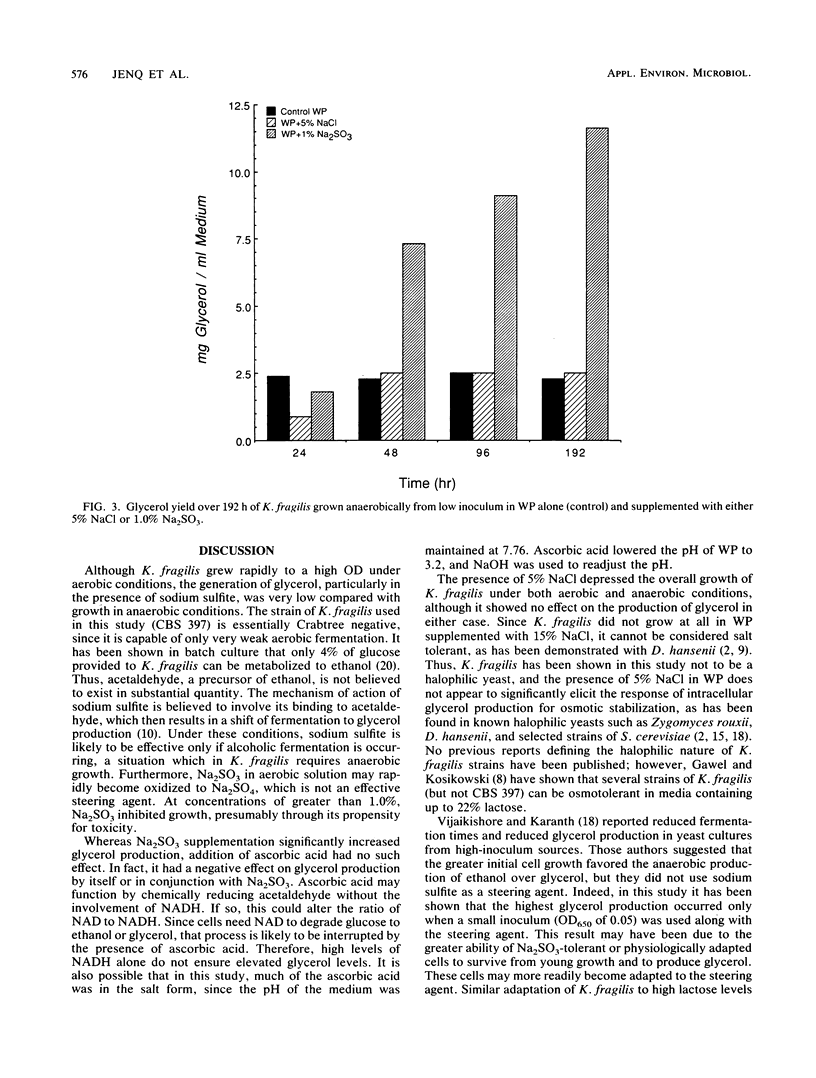
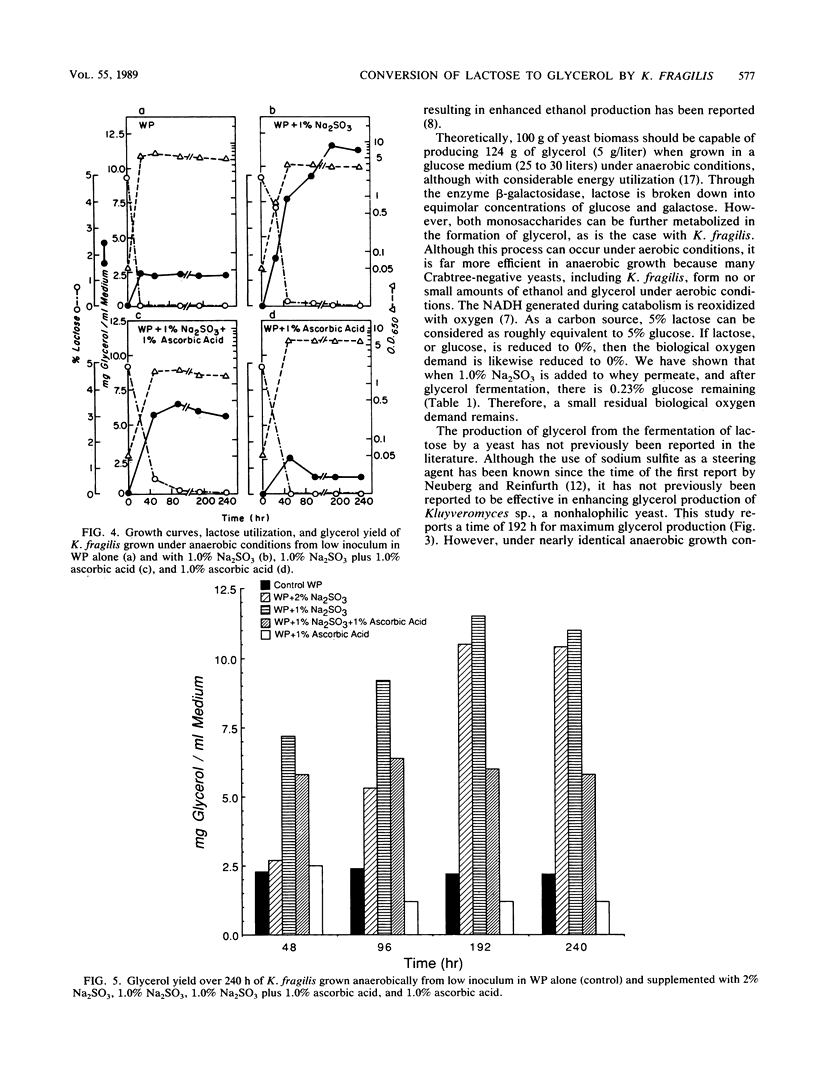
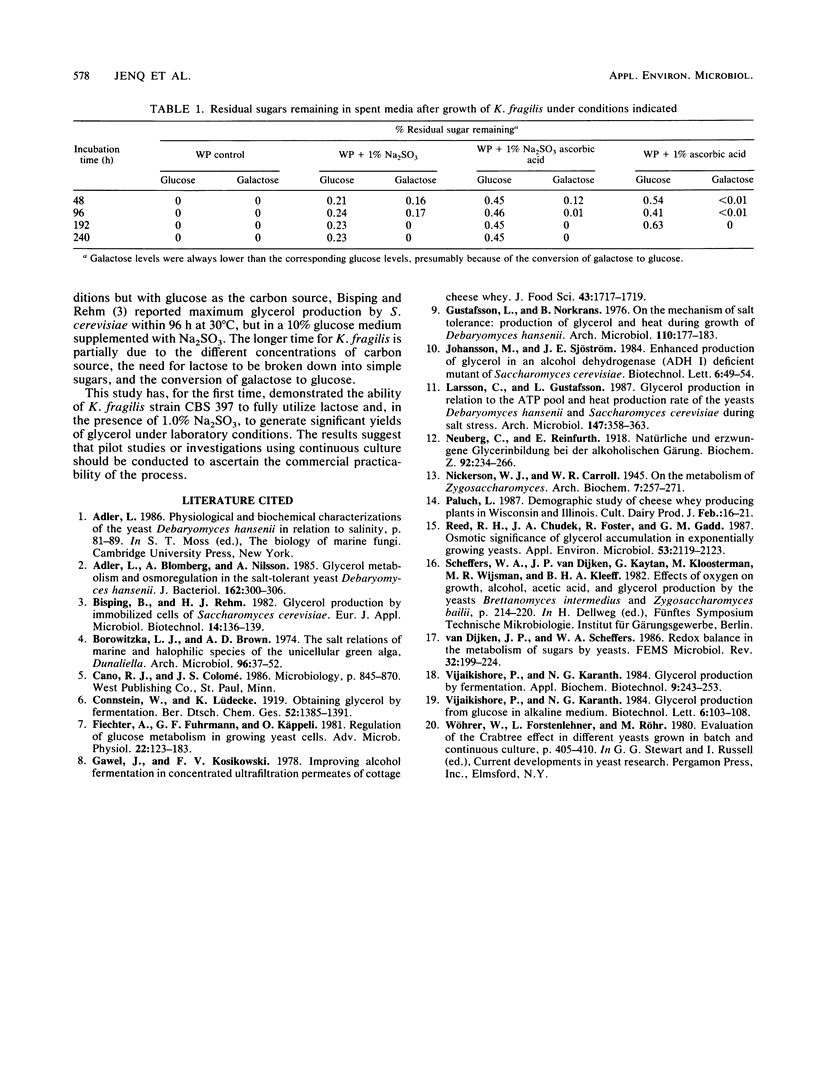
Selected References
These references are in PubMed. This may not be the complete list of references from this article.
- Adler L., Blomberg A., Nilsson A. Glycerol metabolism and osmoregulation in the salt-tolerant yeast Debaryomyces hansenii. J Bacteriol. 1985 Apr;162(1):300–306. doi: 10.1128/jb.162.1.300-306.1985. [DOI] [PMC free article] [PubMed] [Google Scholar]
- Borowitzka L. J., Brown A. D. The salt relations of marine and halophilic species of the unicellular green alga, Dunaliella. The role of glycerol as a compatible solute. Arch Mikrobiol. 1974 Mar 1;96(1):37–52. doi: 10.1007/BF00590161. [DOI] [PubMed] [Google Scholar]
- Fiechter A., Fuhrmann G. F., Käppeli O. Regulation of glucose metabolism in growing yeast cells. Adv Microb Physiol. 1981;22:123–183. doi: 10.1016/s0065-2911(08)60327-6. [DOI] [PubMed] [Google Scholar]
- Gustafsson L., Norkrans B. On the mechanism of salt tolerance. Production of glycerol and heat during growth of Debaryomyces hansenii. Arch Microbiol. 1976 Nov 2;110(23):177–183. doi: 10.1007/BF00690226. [DOI] [PubMed] [Google Scholar]
- Larsson C., Gustafsson L. Glycerol production in relation to the ATP pool and heat production rate of the yeasts Debaryomyces hansenii and Saccharomyces cerevisiae during salt stress. Arch Microbiol. 1987 May;147(4):358–363. doi: 10.1007/BF00406133. [DOI] [PubMed] [Google Scholar]
- Reed R. H., Chudek J. A., Foster R., Gadd G. M. Osmotic significance of glycerol accumulation in exponentially growing yeasts. Appl Environ Microbiol. 1987 Sep;53(9):2119–2123. doi: 10.1128/aem.53.9.2119-2123.1987. [DOI] [PMC free article] [PubMed] [Google Scholar]


